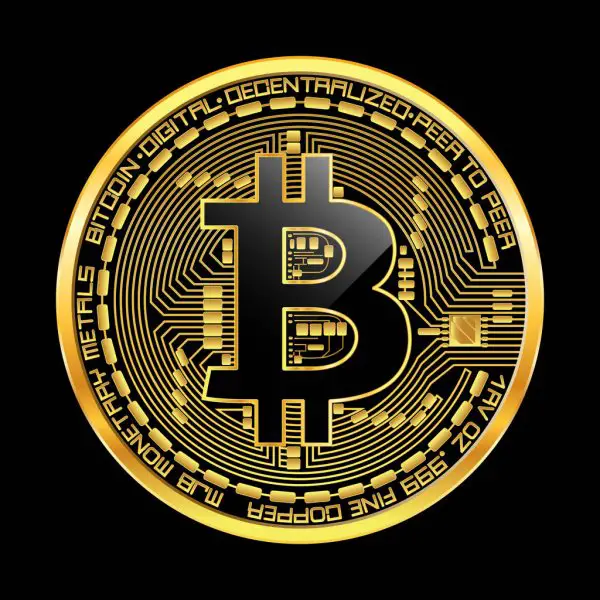Bitcoin has, again, fallen below £24,500, as Terra’s crippling crash puts apparent stress across the whole market.

The majority of cryptocurrency dipped again after showing small signs of recovery.
Bitcoin, which is now below £24,600 as the market continues to feel the effects of fellow (now ex) top ten token Terra’s crippling crash coupled with a wide spread relaxing of enthusiasm (hardly surprising given whats happened).
Here are the prices of major coins as of the beginning of this week:
- Bitcoin – £24,250
- Ethereum – £1,650
- XRP – £0.34
- Solana – £44
- Crypto.com – £0.16
- Cardano – £0.45
- Avalanche – £27.40
- Stellar – £0.10
- Dogecoin – £0.071
- Shiba Inu – £0.000010
- Luna – £0.00016
What is actually happening?
It is common for crypto currencies to follow fashions meaning general mood around cryptocurrencies gets ‘hype’ but also ‘cools’. But the un-governed market can be manipulated buy big holders making big moves.
TerraUSD (UST) collapsed after losing its peg to the dollar, which has also all but wiped out Luna, which is its support token.
“We have witnessed the rapid decline of a major project, which sent ripples across the industry, but also a new found resiliency in the market that did not exist during the last market downswing.” said Changpeng Zhao the CEO of one of cryptos biggest exchange ‘Binance’, tweeted on Sunday:
Coinbase, the largest crypto exchange in the US, posting net losses of £348m, far worse than analysts were expecting, and some serious changes to their terms and conditions caused its share price to fall sharply.
“trend of both lower crypto asset prices and volatility that began in late 2021”, but was quick to point out that it does not expect these conditions to be “permanent”.
This leads us to the term ‘crypto winter’ which is when the market reaches the expected ‘cooling off period’. lets just hope its not a ‘Crypto ice age’.
Simon Peters, crypto market analyst at trading platform eToro, said: “The concern now for cryptoasset investors is when the slide will end.
What happened to the Terra (Luna) token?
Luna and TerraUSD (UST) are of the Terra Labs network based in South Korea, a blockchain-based project.
CoinDesk explains: “The Terra blockchain is built on Cosmos SDK; a framework that allows developers to create custom blockchains and build their own decentralised applications on top of Terra for various use cases.
“As of now, The Terra ecosystem contains more than 100 of these natively built projects. These include non-fungible token (NFT) collections, decentralised finance (DeFi) platforms and Web 3 applications.”
The goal of Terra is to be a peer-to-peer electronic cash system.
It aims to do this through the use of “stablecoins”, which are cryptocurrencies pegged to a real-life currency.
UST is pegged to the US dollar, which means one UST is always supposed to be worth around the same as one dollar. Luna plays a vital part in this.
CoinDesk says: “Instead of relying on a reserve of assets to maintain their peg, UST is an algorithmically stabilised coin. This involves using a smart contract-based algorithm to keep the price of UST anchored to $1 by burning (permanently destroying) Luna tokens in order to mint (create) new UST tokens.”
In the Terra ecosystem, users are meant to always be able to swap the Luna token for UST, and vice versa, at a guaranteed price of $1 – regardless of the market price of either token at the time.
Luna crashed due to Terra losing its peg to the dollar, a massive sell-off of UST caused the ‘stablecoin’ to lose its peg and it fell to 99 cents against the dollar. That trend would continue to worsen over the next few days as UST hit a low of 26 cents.
UST’s value fell, which led to the algorithm issuing more Luna coins to try and recorrect. However, Luna’s value was also spiralling downwards.
CoinDesk analyst George Kaloudis said:“The total supply of Luna went from about 725 million tokens on 5 May to about 7 trillion on 13 May. Meanwhile, Luna lost 99.9 per cent of its value. This is what hyperinflation looks like.”
The coin’s value tumbled from around $6.75 to less than one cent over just a couple of days, and is valued at $0.0002 as of Monday morning.
Leading crypto exchange Binance temporarily suspended withdrawals on Luna on Wednesday, and on Thursday night the Terra blockchain temporarily halted.
Terra said it made the move to “prevent governance attacks”.
Terra’s official Twitter account added on Friday: “A post-mortem on everything that transpired the past week is in progress. It will be published ASAP.
“These are tremendously difficult times for everyone affected. The feelings are still raw. Please be safe.”
Will it all go back up?
Due to the nature of Crypto its uncertain but history does tend to repeat itself.
However big crypto investors and even countries are starting to join the party.
On Wall Street, JPMorgan Chase, Morgan Stanley and Goldman Sachs are among the firms that n dedicated cryptocurrency teams. Meanwhile, mainstream hedge funds, managed by the likes of Alan Howard and Paul Tudor Jones, are all pouring in billions of dollars.
Paul Veradittakit, partner at digital asset manager Pantera Capital, told Bloomberg: “Compared to 2018, there are more institutional investors with exposure to crypto and most see this as a buying opportunity.”
Brian Nick, chief investment strategist at Nuveen, told Bloomberg: “What gets punished when financial conditions are tightening? Anything with a high valuation and an uncertain or non-existent revenue stream.
“And crypto has inarguably high valuations and no revenue stream. That’s very much of a piece with what we’re seeing in growth stocks, tech. It’s correlated but obviously it’s more volatile because the market is less liquid.”
How risky is cryptocurrency?
People invest at their own risk and cryptocurrencies are not regulated by British financial authorities. Its a gamble
The Financial Conduct Authority (FCA) warned in January: “Investing in cryptoassets, or investments and lending linked to them, generally involves taking very high risks with investors’ money.
“If consumers invest in these types of product, they should be prepared to lose all their money.”
Susannah Streeter, senior investment and markets analyst, Hargreaves Lansdown previously explained the risks to i.
She said: “On top of being extremely volatile, most cryptocurrencies are unregulated, which not only adds another layer of uncertainty but also means that investors have little or no protection against fraud.”
